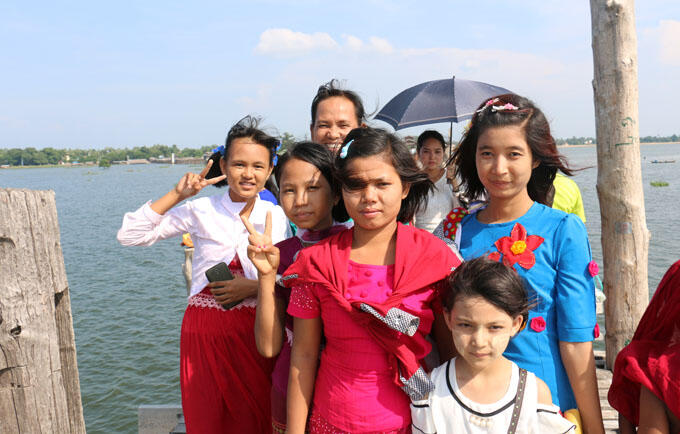The newly released census report 2014 Myanmar Population and Housing Census Thematic Report on Population Projections 2014-2050, projects the growth of Myanmar’s population over the next 35 years and provides Myanmar with a crucial tool for determining future development needs.
Population projections are an important instrument for both national and sub-national governments as they plan and allocate resources for infrastructure and services such as transportation, health, education, housing, childcare, and support for the elderly. For example, urban growth puts pressure on physical infrastructure and resources. Accurate projections allow planners to monitor and revisit assumptions and interventions. The private sector needs population projections to better understand future market dynamics, including supply and demand. NGOs, civil society and international organizations use the projections too for planning, targeting and resource allocation. Population projections can also be used to support democratic processes such as elections, reforms, and participatory democratization.
Population projections have important policy implications because they allow governments to formulate strategies that are based on evidenced facts. For example, by investing in education and economic opportunities for women and young people, Myanmar can harness demographic and gender dividends. And by understanding the changing age structure, the government can plan ahead for the social support and health care needed for a growing elderly population. Population projections are also used by academia and researchers to detect trends and future needs. This includes macro-economic modelling and to predict economic growth, per capita income, employment, and other socioeconomic development indicators.
Key findings from the 2014 Myanmar Population and Housing Census Thematic report on Population Projections 2014-2050:
- The total population of Myanmar is estimated to be 65 million by 2050. The projection is based on steadily declining population growth rate over the projection period: from 0.9 per cent in 2015 to 0.3 per cent in 2050. Decreasing crude birth rates are the main reason for the decline. The population ages steadily and substantially over the projection period.
- The proportion of the urban population rises from 29.3 per cent in 2015 to 34.7 in 2050. The rural and urban crude birth rates both decline between 2015 and 2050, but the difference between them narrows to almost zero by the end of the period.
- The population of Yangon grows more rapidly than any other area, by 39 per cent between 2015 and 2031. Other rapidly growing areas include Kayah (37 per cent), Kachin (32 per cent), Nay Pyi Taw (27 per cent), and Shan (26 per cent). Ayeyawady, Magway and Mon lose population, mostly due to migration.
Download: Population projections (2014 Myanmar Population and Housing Census)
The census was conducted by the Government of Myanmar. UNFPA has provided, and continues to provide, technical and financial support towards the census.


